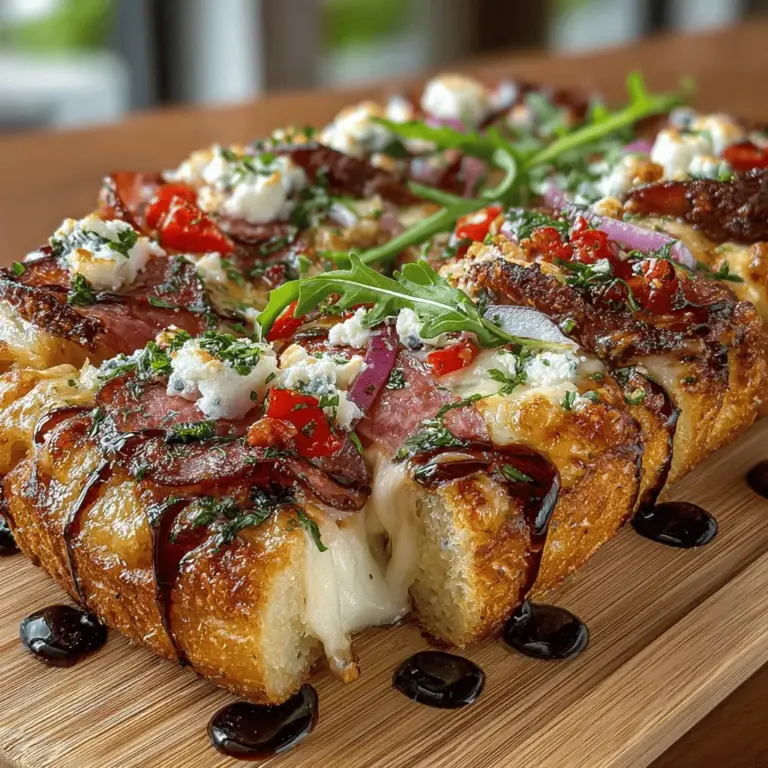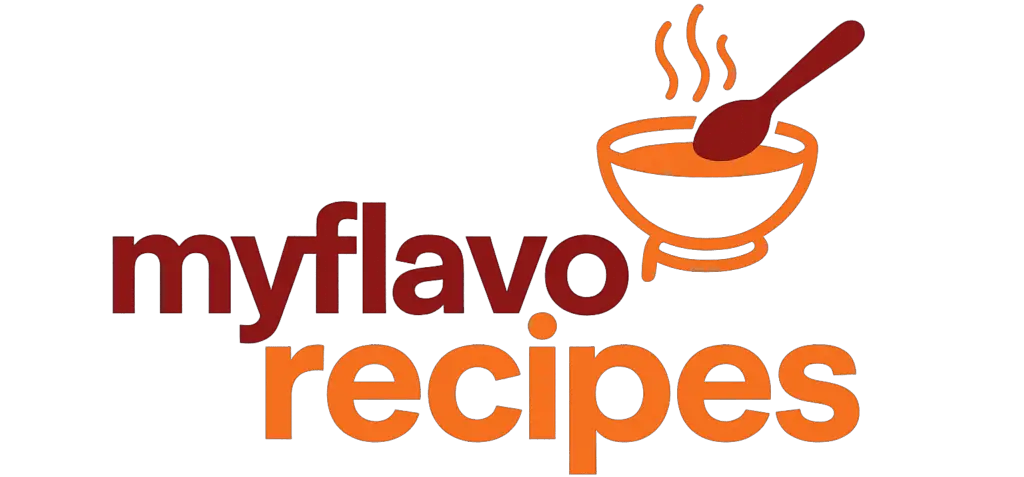Charcuterie Board Pizza Recipe
Introduction
In recent years, charcuterie boards have surged in popularity, becoming a staple at gatherings, casual dining experiences, and family meals. These beautifully arranged platters of cured meats, cheeses, and accompaniments have captured the hearts (and appetites) of food lovers everywhere. Their versatility makes them perfect for any occasion, allowing hosts to showcase an array of flavors and textures that cater to diverse palates. But what if you could take the essence of a charcuterie board and transform it into a delicious pizza? Enter the Charcuterie Board Pizza—a creative fusion that marries the beloved elements of traditional pizza with the sophisticated charm of a charcuterie spread.
The Charcuterie Board Pizza offers an exciting twist that appeals to both pizza aficionados and charcuterie enthusiasts alike. Imagine biting into a slice that combines the savory richness of cured meats, the creaminess of cheese, and the vibrant flavors of fresh vegetables, all nestled atop a perfectly baked crust. This dish not only serves as a delightful meal but also as an eye-catching centerpiece for social gatherings, sparking conversation and enticing guests to dig in. Whether you’re hosting a game night, a cozy family dinner, or a casual get-together with friends, this pizza is sure to impress.
Understanding Charcuterie: A Culinary Art
To fully appreciate the Charcuterie Board Pizza, it’s essential to understand the culinary art of charcuterie itself. Originating in France, charcuterie refers to the preparation and preservation of various meat products, primarily pork, through methods such as curing, smoking, and drying. Traditionally, charcuterie boards feature an assortment of cured meats, cheeses, pickles, nuts, fruits, and bread, all artfully arranged to create a stunning visual presentation. Each component plays a crucial role, contributing distinct flavors and textures that elevate the overall experience.
Common types of meats found on a charcuterie board include prosciutto, salami, and pepperoni, each bringing its unique taste profile to the table. Prosciutto, for instance, is known for its delicate, sweet flavor and melt-in-your-mouth texture, while salami offers a robust and spiced taste. Pepperoni, on the other hand, adds a bit of heat and a satisfying chew. Accompanying these meats, you’ll typically find an array of cheeses—ranging from creamy brie to sharp cheddar—alongside fresh and pickled vegetables that provide freshness and crunch.
The Charcuterie Board Pizza takes these classic elements and reimagines them in a pizza format. By incorporating these diverse flavors and textures into a single dish, it captures the essence of a charcuterie board while delivering the comforting satisfaction of pizza. The result is a harmonious blend that is both familiar and innovative, making it an appealing option for a variety of dining occasions.
Ingredients Overview
To create the perfect Charcuterie Board Pizza, you’ll need a thoughtful selection of ingredients that reflect the essence of charcuterie while ensuring a delicious pizza experience. Here’s a detailed breakdown of the key components:
– Pre-Made Pizza Dough: The foundation of your pizza, the dough can be store-bought for convenience or homemade for a more personalized touch. If you opt for store-bought, many grocery stores offer high-quality options that can save you time without sacrificing flavor. Homemade dough, on the other hand, allows for customization in terms of thickness and flavor, giving you complete control over the final product.
– Pizza Sauce: The sauce is another crucial element that enhances the overall flavor of your pizza. While marinara sauce and pizza sauce are often used interchangeably, they have distinct flavor profiles. Marinara is typically chunkier and more tomato-forward, while pizza sauce is smoother and may include additional seasonings tailored specifically for pizza. Choosing the right sauce can elevate your Charcuterie Board Pizza to the next level.
– Cheese: When it comes to cheese, mozzarella reigns supreme for its excellent melting qualities and mild flavor. It acts as a perfect canvas for the other toppings, allowing their flavors to shine through. You might also consider adding a sprinkle of parmesan or a drizzle of creamy goat cheese for an extra layer of richness.
– Charcuterie Meats: The star of the show, the selection of cured meats is what truly defines this pizza. Prosciutto, with its delicate sweetness, pairs beautifully with the richness of cheese. Salami brings a bit of spice and depth, while pepperoni adds a classic, zesty kick that many pizza lovers adore. Feel free to mix and match according to your preferences.
– Vegetables: To enhance both flavor and visual appeal, a variety of vegetables can be added. Kalamata olives offer a briny punch, while roasted red peppers contribute a sweet, smoky flavor. Red onions provide a sharp bite that balances the richness of the meats and cheese. Together, these veggies create a vibrant and colorful topping that makes your pizza not only delicious but also visually enticing.
– Seasoning: A sprinkle of dried oregano and other seasonings can elevate the dish by providing an aromatic quality that complements the other ingredients. This is especially important in a pizza, where the seasonings can enhance the overall flavor profile and unify the dish.
– Optional Toppings: For those looking to add an extra touch, consider finishing your pizza with fresh arugula and a drizzle of balsamic glaze. The peppery flavor of arugula adds freshness, while balsamic glaze contributes a sweet tanginess that ties all the elements together beautifully.
Step-by-Step Instructions for Making Charcuterie Board Pizza
Once your ingredients are gathered, it’s time to roll up your sleeves and start crafting your Charcuterie Board Pizza. The first step in this culinary adventure is preheating your oven. Achieving the right temperature is crucial for a perfect pizza crust—ideally, you’ll want your oven to reach a scorching 475°F (245°C). This high heat ensures that the crust becomes crispy and golden while keeping the toppings perfectly cooked.
For optimal baking, consider using a pizza stone if you have one. Preheating the stone in the oven allows it to absorb heat, which helps to create a beautifully crisp crust. If you don’t have a pizza stone, a baking sheet turned upside down can serve as a suitable alternative. Just be sure to preheat it alongside the oven to ensure an evenly cooked pizza.
With your oven preheated and your stone or baking sheet ready, you can move on to the next steps of assembling your Charcuterie Board Pizza.
Stay tuned for the next part of this article, where we will dive into the detailed instructions for assembling and baking your delicious Charcuterie Board Pizza!



